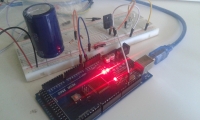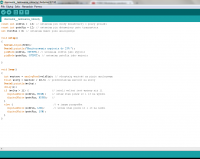camfly1 wrote:
Why is it worth controlling the power dissipated by the heater? (It wouldn't be difficult)
As I wrote above, the real Umpp changes with the conditions under which PV works, especially with its temperature. If we want to reach the max, we should track the maximum power point on an ongoing basis, which requires the use of some algorithm with MPPT. With a constant heater resistance, it is de facto enough to follow the effective voltage on it - when it reaches the maximum, i.e. that the PV works at Umpp. Simple in theory but difficult in practice because simple measurement is not enough.
http://ep.com.pl/artykuly/10079-Swiadomosc_pomiarow_Czy_swiadomie_mieomie_to_co_mieomie.html
To determine the power on the heater, we need to measure True RMS. Since the regulator will change the frequency and width of the pulses, the voltage waveform on the heater may be very distorted and the normal voltage measurement will be for your dog's shed. Therefore, at the beginning, it is advisable to stick to a certain voltage band on PV, which will give a sufficiently high efficiency, and when everything is fine, you can try a real MPPT.





